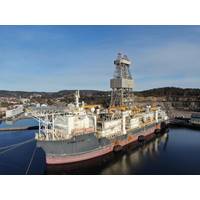
Subsea Mining: All Eyes on Marine Minerals Offshore Norway
to guide the operation, understanding how much they’ve mined. INESC TEC has already preformed in-water trials with the system, in 15m water depth, transferring ‘mined’ material to shore via a pipeline, says Silva.The organization is also working on underwater laser induced breakdown spectroscopy (LIBS), which could help to indicate the mineral content of material being mined. INESC TEC also has a concept called Turtle. This is a deepsea mobile robotic lander, which provides a seabed reference framework, in which the mining and hybrid vehicles can navigate, but also contains various sensors
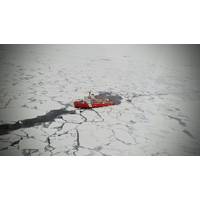
New Study Finds Polyester Fibers Throughout the Arctic Ocean
Sea in North America.A total of 71 near-surface samples were collected across the Arctic. We also collected 26 samples from the Beaufort Sea from just below the surface down to a depth of 1,015 meters. We then filtered and analyzed the samples back at the Ocean Wise Plastics Lab using microscopes and spectroscopy to identify plastic polymers.Microplastics are particles less than five millimeters long. We found an average of 49 microplastic particles per cubic meter of seawater throughout the Arctic, illustrating just how widespread synthetic plastic pollution has become in this remote region. This is lower
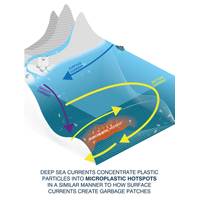
SCIENCE: Seafloor Microplastic Hotspots Controlled by Deep-sea Currents
from the seafloor of the Tyrrhenian Sea (off the west coast of Italy) and combined these with calibrated models of deep ocean currents and detailed mapping of the seafloor. In the laboratory, the plastics were separated from sediment, counted under the microscope, and further analysed using infra-red spectroscopy to determine the plastic types. Using this information the team were able to show how ocean currents controlled the distribution of microplastics on the seafloor.This research forms part of an international research project at the University of Manchester (UK), the National Oceanography Centre
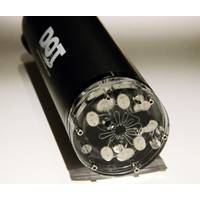
Environmental DNA Emerging in the Ocean Science Community
involvement than conventional instruments, making them ideal for long term deployments. These concepts are being employed to eDNA by the Sieben Lab at Dalhousie University in Nova Scotia. Their "Inlaid Optical Celltm" technology is a patent-pending approach that enables miniaturized optical spectroscopy on ultra-small amounts of fluid, less than a few microliters. Conserving reagent usage per measurement minimizes the volume of onboard chemicals and waste storage leading to smaller sensors. These inlaid cells are used to perform absorbance and fluorescence measurements. In these systems
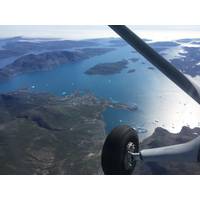
Airborne Hyperspectral Survey, Mineral Mapping in Greenland
with the Ministry of Mineral Resources, Government of Greenland. Under this contract ASL will process and analyze a large amount of airborne hyperspectral data in order to produce mineral maps for the Gardar Province in south Greenland.Hyperspectral remote sensing (also referred to as imaging spectroscopy) provides image data recorded in a large number of wavelengths, many outside of the human visual range. The image data can be used in the same fashion as a laboratory spectrometer, to detect and quantitatively map spectral features specific to many minerals. By comparing on-ground hyperspectral
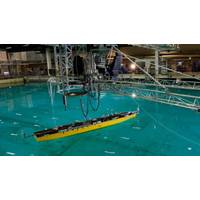
Higher Learning & SINTEF’s Existential Rise
materials lab in Oslo employs modeling and supercomputer infrastructure called SIGMA2, or the national infrastructure for computational science. Researchers use supercomputing and microscopy to determine the molecular responses of materials being lab-tested.“We utilize a range of microscopy, spectroscopy and spectrometry techniques,” one of a preponderance of foreign-born researchers says of the materials science at SINTEF. Complementary facilities include a coating laboratory and field testing understood to have been availed by the likes of coatings giant Jotun for the award-winning antifouling
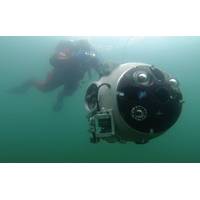
Subsea Mining: The Next Big Thing for UUVs
, are seen doing sampling survey, mapping, hyperspectral photo work (metals detection), environmental monitoring, risk assessment, cutting-process observation and serving as equipment mules from seabed to surface. The EVA HROV also uses advanced mineralogical sensors, or Laser Induced Breakdown Spectroscopy (LIBS), to analyze the seabed or minerals being lifted. In all, INESC TEC developed the “perception, navigation and awareness systems” for the mining vehicle and EVA robot (together the same EU project).The other AUV developed under the aegis of the EU is the UX-1 (prototype) or UX-1b
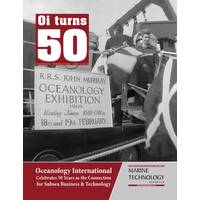
Oi: Tracking 50 Years of Ocean Innovation
into the marine sector. “It’s bringing people together that don’t normally work together,” says Rayner.Technology has also continued to evolve. More recently, in the past five years, there has been a revolution in sensors, physical oceanographic and biological, such as in-situ spectroscopy and “E-DNA” (environmental DNA) techniques, says Rayner. “There has been an emergence of a whole range of techniques not possible five years ago.”There are also those for whom Excel has been their introduction to Oceanology. Justin Manley’s first Oceanology was at
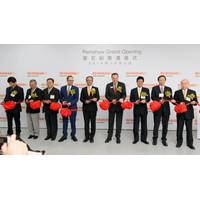
Renishaw Opens Office in Taiwan
to the market by its long-term Taiwanese distributors, MTC and Usync, more than 25 years ago. As well as its full range of industrial metrology products, including probe sensors for CMMs and CNC machine tools, calibration systems, position encoders, flexible gauging systems and Raman spectroscopy products, Renishaw is also actively promoting and sharing its advanced metal additive manufacturing (3D printing) technology in Taiwan. The official opening ceremony was performed by Lai, together with Jean-Marc Meffre, Managing Director of Renishaw Far East; George Norris, Acting Deputy

 February 2025
February 2025





